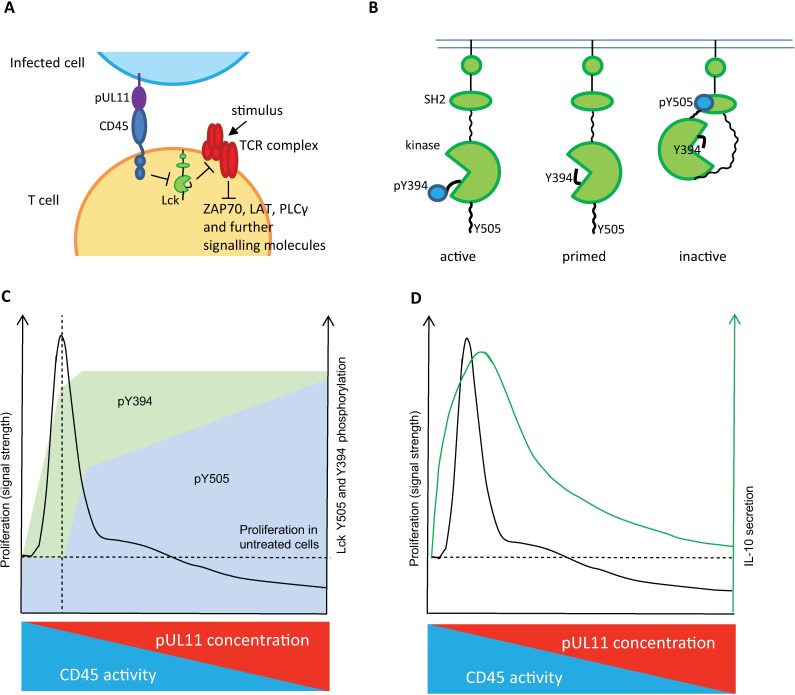Fig 8. Model.
A) pUL11 on the surface of infected cells interacts with T cell CD45. The ability of CD45 to dephosphorylate regulatory tyrosine residues of Lck is reduced. This, in turn, affects the phosphorylation of ITAMs in the TCR complex and other downstream signalling molecules (either positively or negatively, depending on Lck activity). B) Phosphorylation of Lck regulatory tyrosines Y505 and Y394 determines its kinase activity. Y505 phosphorylation induces a closed, inactive state. Y394 phosphorylation is activating, by allowing substrates access to the kinase domain. C) PBMC proliferation in response to stimulation is dependent on the phosphorylation state of Lck Y394 (activating) and Y505 (inhibitory). Peak proliferation (vertical dashed line) is seen when pY394 is increased and diminishes as pY505 increases, inactivating Lck. At the highest levels of pY505, proliferation is inhibited (below the horizontal dashed line). As the concentration of pUL11 is increased, the ability of CD45 to dephosphorylate Lck decreases, shown by increased levels of pY394 and pY505. CD45 preferentially dephosphorylates pY505, hence higher amounts of pUL11 are required to affect Y505 phosphorylation. D) IL-10 secretion induced by pUL11 treatment appears to be influenced by changes in signal strength. T cell IL-10 production is influenced by changes to downstream signalling intermediates such as could be affected by pUL11 treatment.[31,47].

